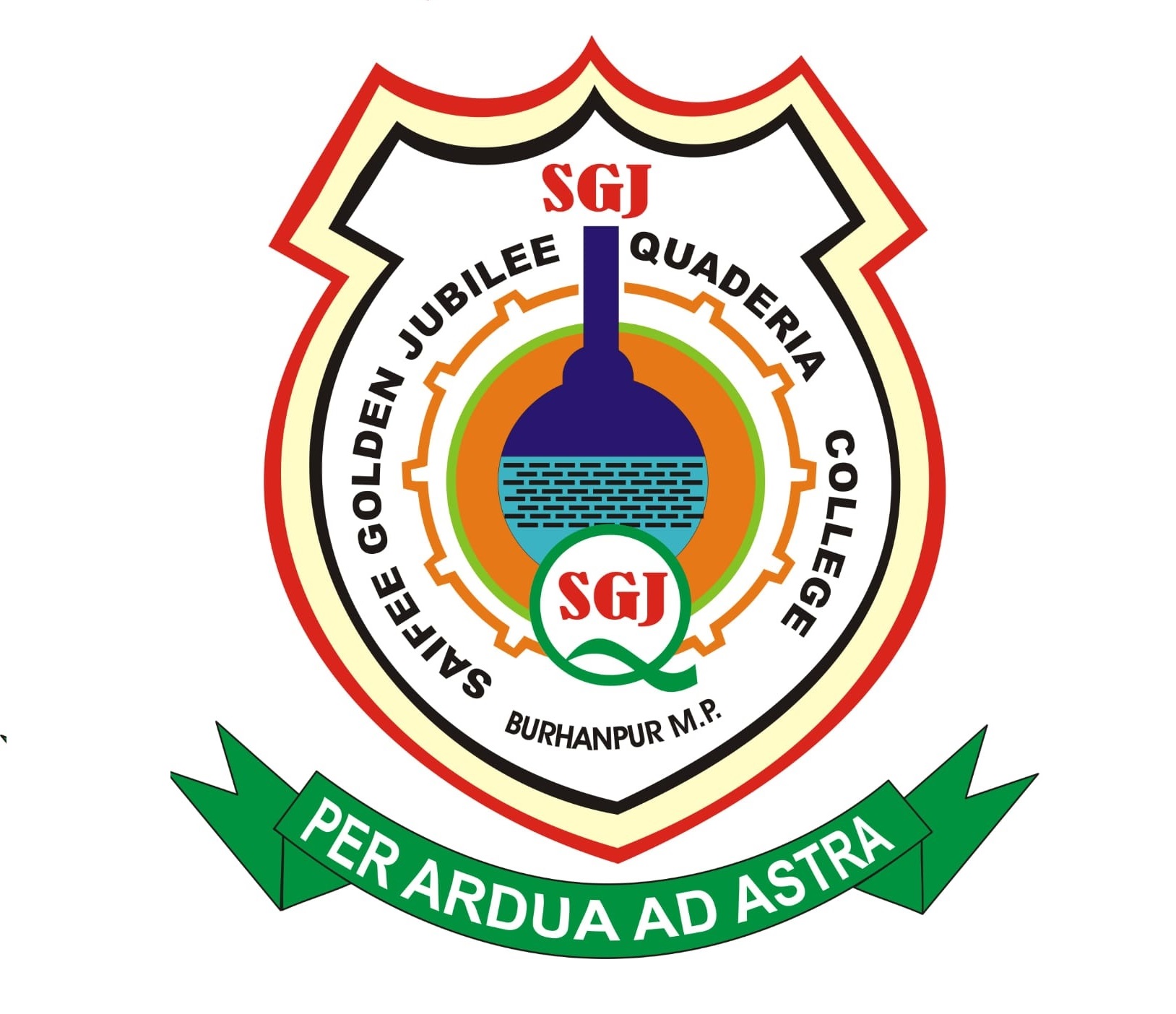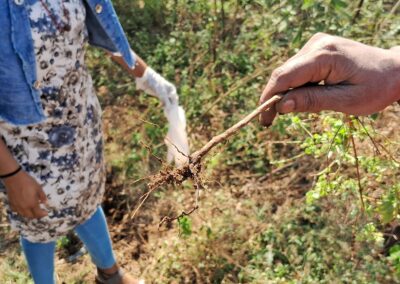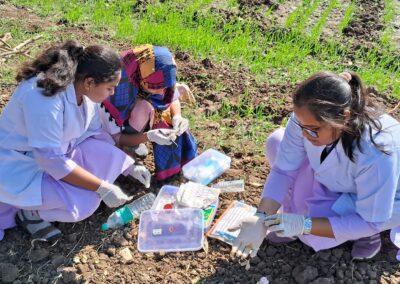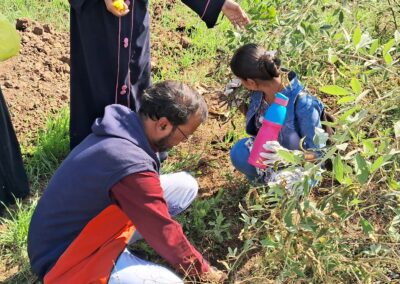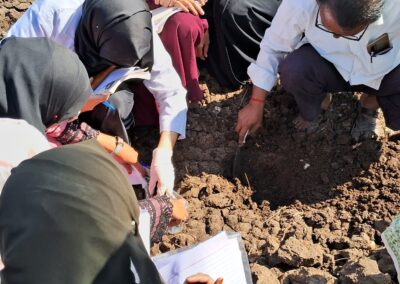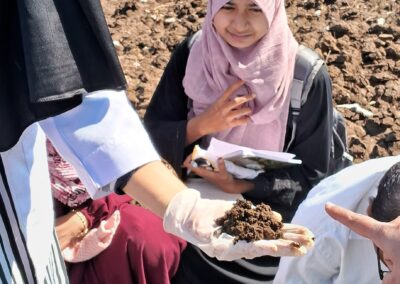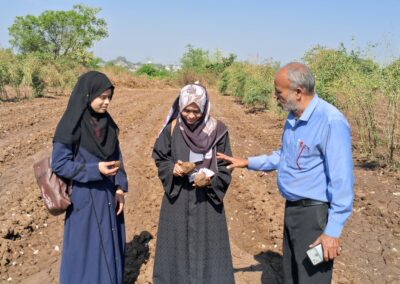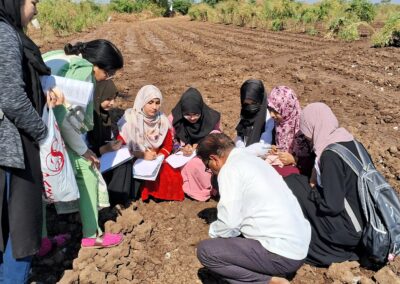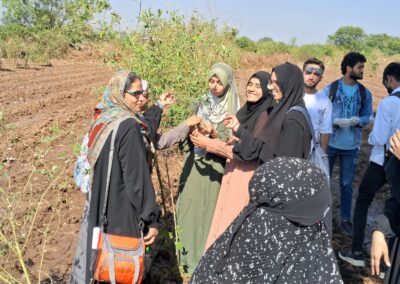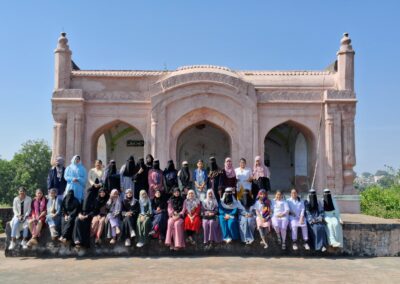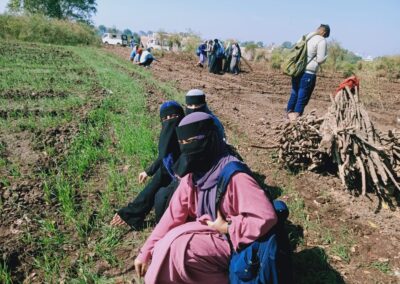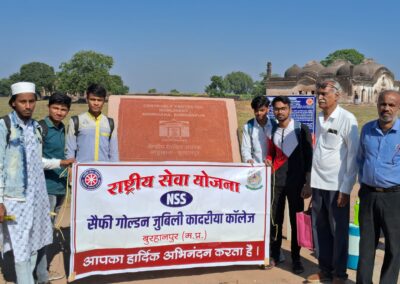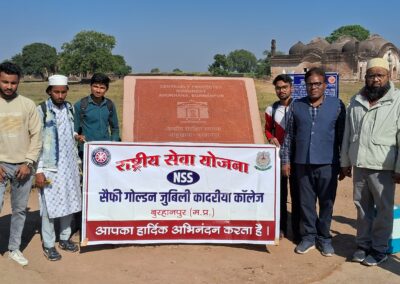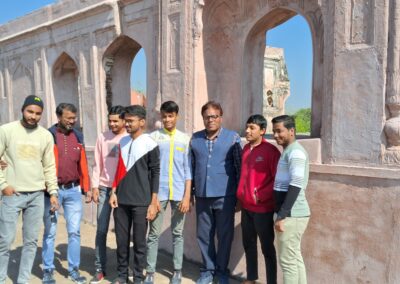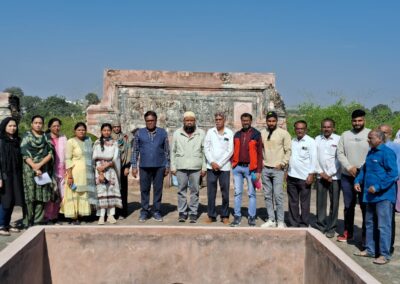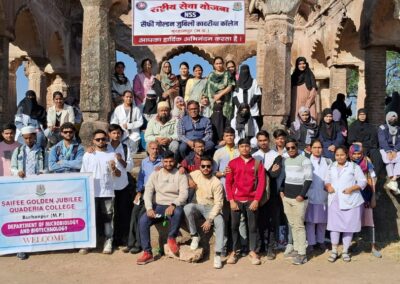On 14th December Saturday, SGJQ College organized an interdisciplinary educational and recreational trip to Ahukhana, Jainabad, a historical site located near the serene Tapti River. Students from various streams participated in the trip, which aimed to provide a holistic experience of history, culture, and environmental learning.
Objectives and Aims
The trip was designed to:
- Offer insights into the historical significance of Ahukhana.
- Foster interdisciplinary learning through exploration of the site and its surroundings.
- Enhance practical knowledge and skills, particularly in botany, for science students.
- Promote cultural appreciation, teamwork, and enjoyment among all participants.
Historical Exploration
Students explored the rich history of Ahukhana, an architectural marvel showcasing Mughal-era designs and its strategic location near the Tapti River. Faculty members guided students through the historical significance of the site, helping them understand its role in local heritage.
Botanical Insights and Farm Visit
The visit also included an interactive session at a nearby 4-acre farm. Botany students learned about the cultivation and ecological significance of various crops and plants:
1. Tuar Dal (Pigeon Pea)
- Scientific Name: Cajanus cajan
- Key Learning: Its nitrogen-fixing properties and importance in sustainable farming.
2. Ganna (Sugarcane)
- Scientific Name: Saccharum officinarum
- Key Learning: Cultivation techniques and economic value.
3. Babul (Acacia)
- Scientific Name: Vachellia nilotica
- Key Learning: Soil conservation benefits and traditional uses.
4. Gular (Cluster Fig)
- Scientific Name: Ficus racemosa
- Key Learning: Ecological role and medicinal applications.
The session enriched students understanding of farming techniques, crop management, and the practical applications of their syllabus concepts.
Skills and Learning Outcomes
The trip provided an excellent platform for students to:
- Develop Practical Knowledge: Learning about plant identification and agricultural practices.
- Enhance Communication Skills: Engaging with local farmers and peers during discussions.
- Appreciate Cultural Heritage: Understanding the historical importance of Ahukhana.
- Strengthen Teamwork: Collaborating on tasks and participating in group activities.
Curriculum-Based Learning and Project Development
The plants studied during the field trip were not just observed but also analyzed as part of the students’ curriculum. The Botany students are now utilizing their observations to prepare detailed project work on the plants, integrating theoretical knowledge with field data. This initiative is aimed at enhancing their research skills, deepening their understanding of plant biology, and fostering active learning through real-world applications. This connection between the field trip and the academic curriculum has made the experience even more impactful, ensuring a comprehensive and meaningful learning
process for all participants.
Engagement and Enjoyment
The trip was a blend of education and enjoyment. Students explored the historical site, observed farming practices, and shared a delicious lunch amidst the picturesque surroundings of the Tapti River.
Feedback
The trip received enthusiastic feedback from students across all streams. Botany students, in particular, expressed gratitude for the opportunity to connect their academic learning with real-world applications. All participants enjoyed the excursion and appreciated the interdisciplinary approach to learning.
Conclusion
This trip to Ahukhana was a well-rounded experience that combined historical exploration, academic enrichment, and personal development. It was It served as a reminder of the importance of integrating cultural heritage and environmental learning into the education system
